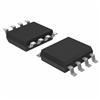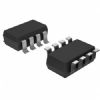TMP47C670N: Features: SpecificationsDescription The TMP47C670N has the following features including 4-bit single chip microcomputer;instruction exection time;interval timer;two 12bit timer/counters. There are s...
floor Price/Ceiling Price
- Part Number:
- TMP47C670N
- Supply Ability:
- 5000
Price Break
- Qty
- 1~5000
- Unit Price
- Negotiable
- Processing time
- 15 Days
SeekIC Buyer Protection PLUS - newly updated for 2013!
- Escrow Protection.
- Guaranteed refunds.
- Secure payments.
- Learn more >>
Month Sales
268 Transactions
Payment Methods
All payment methods are secure and covered by SeekIC Buyer Protection PLUS.

 TMP47C670N Data Sheet
TMP47C670N Data Sheet







